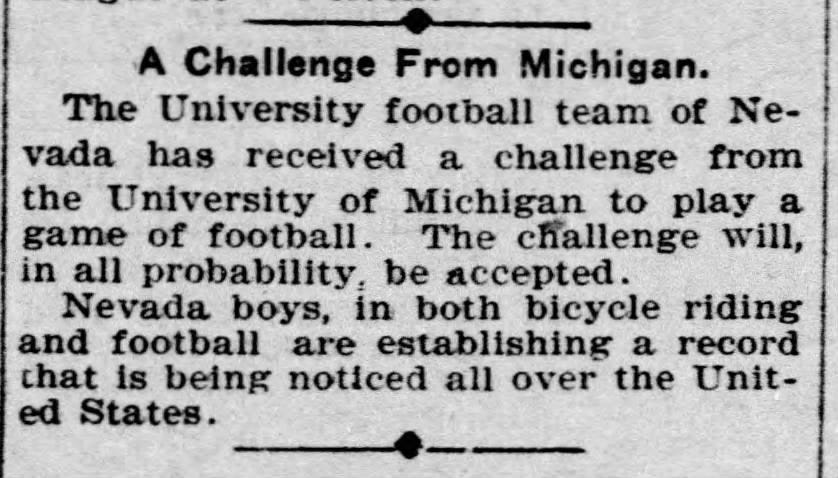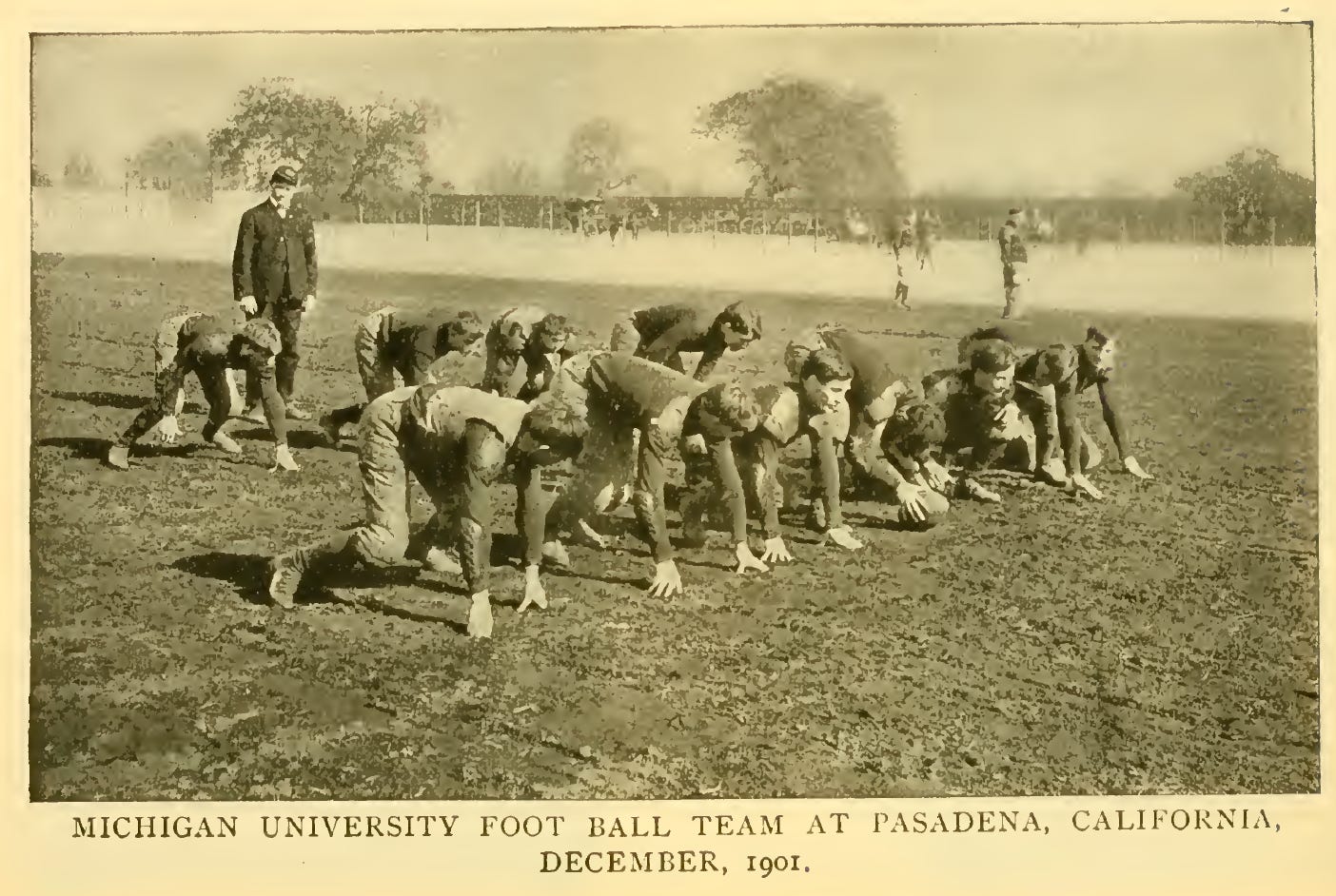Today's Tidbit... Underestimating the 1901 Michigan Football Team
It was impossible in 1901 for the average fan or sportswriter to accurately compare teams from different sections of the country, but that did not stop them from doing so. The country's Eastern side saw limited intersectional play, and games between Eastern teams and those on the West Coast were virtually nonexistent. Chicago visited West Coast teams over the holidays in 1894, and Carlisle did the same in 1899, but otherwise, the teams on either side of the mountains operated in separate worlds.
The Left Coasters hired Easterners to coach their teams, so they employed the latest equipment, training tools, and tactics. Still, the quality of Eastern versus West Coast teams could only be assessed by the practiced eyes of those who understood football and had been on the ground in both locations. Field Yost was one of those folks.
Yost played at West Virginia and then spent one year each coaching Ohio Wesleyan, Nebraska, and Kansas before taking the Stanford job for the 1900 season. In Yost's only year at Stanford, he helped them improve from 2-5-2 in 1899 to 7-2-1 in 1900, suffering losses to the Stanford Alumni and Nevada.
Yost took over at Michigan in 1901, instituted his hurry-up offense, and blew away the competition, outscoring their ten regular-season opponents 501-0. Along the way, Michigan accepted an invitation to play in Pasadena on New Year's Day as part of their Tournament of Roses celebration. Getting to Los Angeles meant a week-long train ride to San Francisco before heading south to Los Angeles. To work out the kinks and perhaps to avenge his loss in 1900, Yost challenged Nevada to a game in San Francisco on Christmas Day. The Nevadans were happy to be considered worthy of playing the Wolverines, but the game did not work out, so the Californian press remained blissfully unaware of what would hit Stanford on New Year's Day.

One California writer quoted Yost extensively, and despite Yost stating facts, the writer took him as boastful and Michigan as overhyped. Yost’s statement included:
Of all the teams opposing [Michigan], but one was able to secure a single one of her punts [onside punts, which were legal at the time], showing the fine work of our ends and tackles. The fullback [playing as a deep safety] has been called upon but once in the course of the season to make a tackle; this was when Merrill of Beloit got around end for fifteen yards on a fake kick. The longest gain of the season against Michigan was this same fifteen-yard run of Merrill's.
'Those Able Wolverines,' Los Angeles Evening Express, December 28, 1901.
Yost also pointed to the speed at which the hurry-up offense hurried up.
...Thanksgiving Day [versus Iowa] Michigan executed 216 plays in seventy minutes, while the same day Harvard ran off only 146 in seventy minutes of play which shows that Michigan was 30 percent faster than Harvard.
He also mentioned how the combination of Michigan's defense and offense meant they consistently controlled the field position:
Michigan's work on the defensive has been excellent all season. Four of the opposing teams were unable to carry the ball into or play in her half of the gridiron during their games. Chicago made but one play in Michigan territory, and in the last three games her opponents made their first downs but seven times. During the season Michigan made 87 touchdowns, kicked 61 goals from touchdown and 1 gold from field.
While Michigan appeared to be a colossus, the Californians thought the Easterners were calling their baby ugly and tried their best to find fault with Michigan. The best the writer above could come out with was to point out that Michigan had not played Wisconsin, who had beaten Chicago 35-0, while Michigan had only bested the Maroon 22-0.
It was likely the same writer that two days later told his readers to expect an even game, warning of Michigan's overconfidence and the grit or sand that filled the Stanford eleven. Perhaps, he thought, Michigan would meet its Waterloo.
Unfortunately for Stanford, the New Year's Day contest proved to be a typical Michigan game. Having averaged 50 points per game and given up none, they beat Stanford 49-0 and were forced to end the game early due to Stanford's physical and emotional injuries. In the end, the Wolverines did to Stanford what they had done to their Midwestern opponents. They overwhelmed them with a speedy offense in which every player ran the ball except the center, and they played stifling defense.
Stanford was not alone in being ill-treated. Michigan treated everyone the same, like dogs. From 1901 through 1905, Michigan outscored their opponents 2,821 to 42 and went 55-1-1. Amazingly, their 56-game unbeaten streak stopped at the end of the 1905 season when they gave up their first two points of the season and lost to Chicago 2-0, giving Chicago the national title.
Few programs have exhibited the same level of dominance as Michigan did during that stretch, and despite Yost coaching Stanford the year before the 1902 Rose Bowl rout, neither Stanford nor anyone else saw it coming.
Football Archaeology is reader-supported. Click here to buy one of my books or otherwise support the site.




Stories about Yost never cease to amaze!